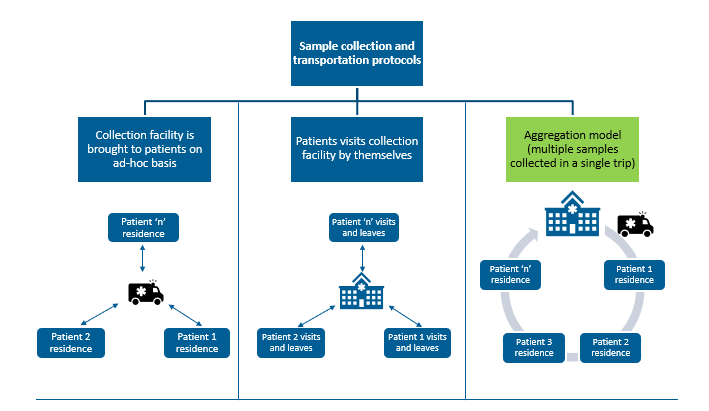
Indian Council of Medical Research has, over the past few days, increased the Covid-19 testing capacity in India massively. Starting with 3,700 tests in March to scaling them up to over 18,000 tests (as on April 11), the testing capacity is all set to increase further. Much of this is attributed to increased procurement of kits, 24*7 labs, and the inclusion of antibody testing kits for testing. The target is to achieve at least 100,000 tests per day. But with limited resources in the country and increasing financial burden in the times of down-spiralling economic growth, are the existing models enough to achieve this?
The present testing of people for Covid-19 happens in two ways. Either the samples are collected from the said patient’s home or the patient is required to visit a hospital in order to submit his sample for testing. In the first model, an ambulance and a phlebotomist goes to the patient’s home and bring back his sample while in the second model, the patient travels to the hospital himself and submits his sample. Now, this one-sample-at-a-time model exerts a lot of financial pressure on the existing infrastructure and resources as the ratio of phlebotomists to patients is not congruent. As the demand for testing scales up, the district administrators will have to look for ways to minimise this cost burden.
We suggest an aggregated model of sample collection wherein one ambulance and phlebotomist can collect multiple samples for testing. This could be an effective way to remove the bottlenecks in the sample collection and transportation process. This aggregated model of sample collection can significantly reduce the need for resources.
For a large city with a million-plus population, where the samples collected are doubled, the need for ambulances reduces by four times with the aggregated model as compared with transporting patients to a facility. The need for phlebotomists, however, increases by a mere 10 per cent. Our findings suggest that districts will have to increasingly move towards the aggregated model of sample collection and transportation in order to ensure the availability of ambulances and phlebotomists. The model may have to be modified and adapted to match the ground realities though.
Ths complete study can be read on Medium here.
The Times of India reported this story on April 28 in its Hyderabad edition. The report can be read online here.
(This article is based on a case study by Prof Sarang Deo, MIHM analysts Hemanshu Das and Aman Kabra, and Ayush Deva of IIIT Hyderabad.)

